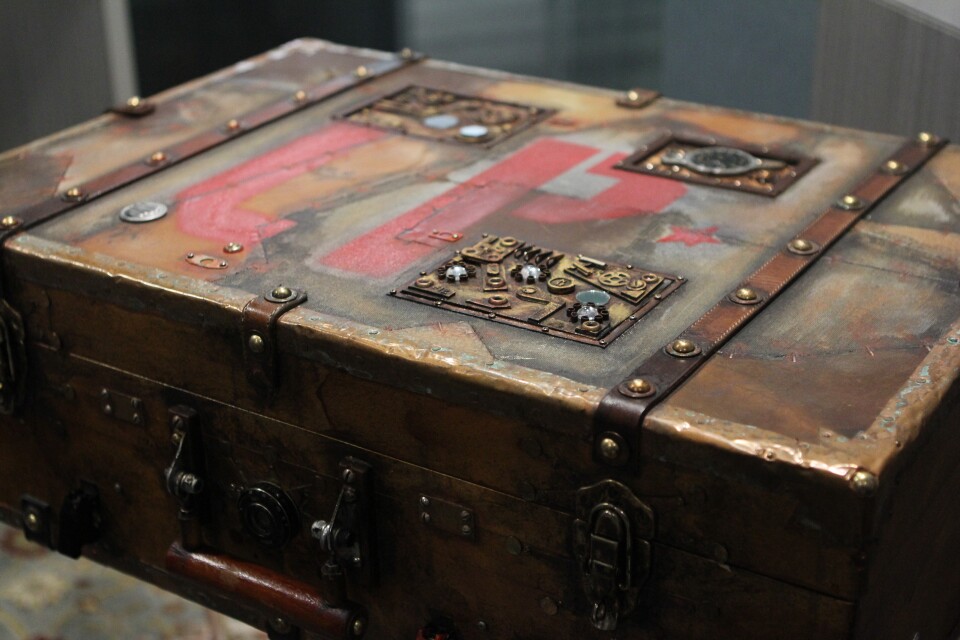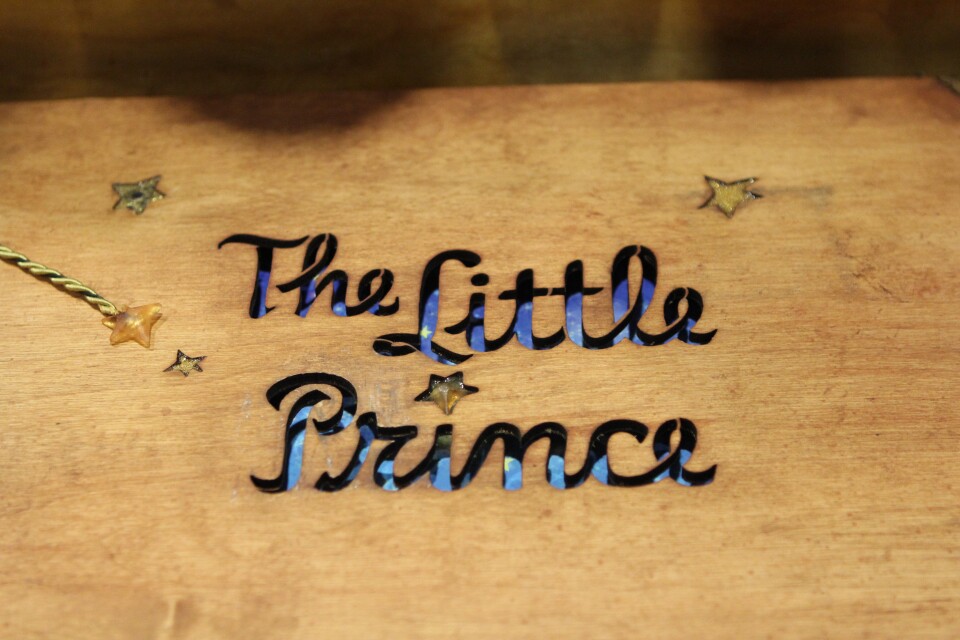Director Marc Osborne didn't want to make a straight-ahead adaptation of "The Little Prince," so he came up with a novel approach; "Equity" is the rare movie about Wall Street that stars and is made by women; Claire Boucher, aka Grimes, dissects her song, “Kill V. Maim.”
Broad Street: A new production company battles gender inequality in Hollywood
There's a new production company whose co-founders are taking the issue of Hollywood gender equality into their own hands.
Broad Street Pictures was founded by the actresses Alysia Reiner and Sarah Megan Thomas. Their first movie, "Equity," is a Wall Street thriller that stars Anna Gunn as a senior investment banker caught in a web of scandal and corruption. After its premiere at this year's Sundance Film Festival, Sony Pictures Classics purchased the worldwide rights to the film.
When John Horn spoke with Alysia Reiner and Sarah Megan Thomas, they spoke about the statistics on gender equality in Hollywood, their love of Wall Street movies, and how their experiences as actors have shaped the way they approach producing.
Interview Highlights:
Do you actually have offices on Broad Street? Or is this a bit of a joke?
Thomas: [laughs] Our offices are either of our apartments, depending on where we are.
Reiner: We're a small company. This is our first film, remember, so we actually came up with the idea because we loved that it was not just a double entendre, but a triple entendre — Broad Street as in Wall Street, because our first movie is a female-driven Wall Street movie. Also, we're two broads, right? And we're trying to make the world more broad, more vast, for women.
So, broadly speaking, Sarah, what is the intention of the production company?
Thomas: The intention is really to create more roles for women, in front of and behind the camera, while at the same time telling really entertaining stories for a broad audience. [laughs]
http://a.scpr.org/i/8da1d0c5031fda79badf6232895a3e69/117610-six.jpg
James Purefoy and Anna Gunn star in the movie, "Equity." Courtesy of Sundance Film Festival
This seems like something that anybody would think was a rational idea. But I suspect that you two are making this decision in reaction to what you're seeing in the rest of the entertainment world.
Reiner: Sure. If you read anything in reference to statistics right now — and we've worked with the Geena Davis Institute, which has done amazing, statistically significant research about women in the industry — it's sadly appalling.
Not only when you look at how many female directors or female producers there are, but also in front of the camera it is 77% male. So all the media that you're watching, be it a cartoon or a Wall Street thriller you really have to go see — it's 77% men in front of the camera. So women and girls are unconsciously seeing themselves as a minority.
Let's talk a little bit more specifically about "Equity." You've set your story on Wall Street, which is probably 80-or-85% male, and you focus on a female protagonist. Can you talk about the world in which this story unfolds?
Thomas: My husband works on Wall Street, actually, so I'm a Wall Street wife. I was always fascinated with that world — I love Wall Street films, I watch all of them. But I've been fascinated by how they don't show the people that I see on Wall Street, and also how there are so few women in these movies.
So when we were thinking about a project to do, this female-driven Wall Street movie came up as an idea that hasn't been done. You asked about the statistics, how male-dominated Wall Street is, and what's interesting is that, out of graduate school or college, it's almost 50/50. They hire 50% women, but it's really an issue of retaining them and getting those women to the top.
http://a.scpr.org/i/0a3de0b746d923b0514f5139fe779c38/117608-six.jpg
Anna Gunn stars in the movie, "Equity." Courtesy of Sundance Film Festival
You've formed this company to give women jobs, both in front of and behind the camera, to tell stories about women, and the films I suspect have a woman's point of view. But as actors yourselves, what did you see in your own careers that made you despair over the situation in Hollywood right now?
Reiner: Wow, what a great question. Just as Sarah's a Wall Street wife, I'm married to an actor. And the amount of opportunity presented to my husband — David Alan Basche, who I love dearly — was outrageously different than the amount of opportunity presented to me. I met him when I was still in college, and that was a big piece of it for me.
And did it change once you hit a certain age, as well? That there's an age bias that's specific to women?
Reiner: Well, yeah. For me, I would by lying if I said it got worse — I've been very fortunate past 28, while most women are afraid to turn 30 or 40 or 50 in our industry. And part of it is amazing show-runners like Jenji Kohan and Shonda Rhimes, who hire amazing women regardless of age. I'm deeply grateful for that.
"Equity" opened on July 29 and is currently in theaters.
How 'The Little Prince' director pitched investors with his 'magic suitcase'
Years ago, filmmaker Mark Osborne was approached to adapt the classic 1943 children’s story, “The Little Prince" by the French poet and aviator Antoine de Saint-Exupéry into a movie using computer-generated animation. Osborne loved the book and its simple hand-painted watercolor illustrations so, naturally, he hated that idea.
I said, No. I said you can’t make a big movie out of this little book. It’ll break.
Instead he came up with a way of putting "The Little Prince" at the center of another story that would act as a framing device. That larger story would focus on a young girl who’s growing up in a dystopian future where adherence to rules deprives people of spontaneity and imagination. That world in Osborne’s movie is rendered in CG animation, but then the girl meets an old, eccentric aviator who tells her the story of "The Little Prince." And she imagines that part of the movie in stop-motion animation.
With that concept in mind, Osborne just needed a way to pitch the story. He came up with "an hour-long interactive presentation" using what he calls "the magic suitcase" filled with hand crafted props to show people his idea was possible.
The pitch was not really about asking people to join the project, but to join the mission of protecting the book. Especially when it came to Jeff Bridges [who plays the aviator] or Hans Zimmer [the composer] or a lot of the key artists that worked on the movie, I really wanted to engage them at the highest level. So it was necessary that we did this.
HOW "THE LITTLE PRINCE" WAS PITCHED WITH THE "MAGIC SUITCASE"

This is a one of a kind work of art that was created by a model-maker named Joe Schmidt. He worked on all my stop-motion projects. He worked on "Coraline." And I asked him to help me build this. This is the pitch case. This is the suitcase. I would walk in and I would bring this in when people would say, What are you doing with this book? I would start here. These lights light up.

We've created this constellation. It's this moment to change the mood and get people to focus in on the story that I'm going to tell.

This book contains all the development artwork that we used and I would take whoever it was. And I've pitched this now probably close to 500 times because I pitched to every single artist that worked on the project, every actor, every investor. [To create the book of artwork] I was working with visual artists who were also writers as we sort of developed ideas and riffed on different themes in the book.

This is where I would introduce the big concept: This little girl who's rendered in CG animation and living in a reality that is CG animation is going to imagine the story of "The Little Prince" in her own special way. In her mind, she's going to create it in stop-motion animation.

That's when I would actually pull out these slide viewers that are hand-made works of art. If you look right up into the light you can see we built these 3D stop motion puppets — little maquettes — to kind of sell the idea. We shot them with stereo photography and were using these little slide viewers. This gives you a clear visual that this will be different.

I pitched this all over the world. This suitcase went with me to Japan, Germany. It's crazy how far this has traveled. But then, I was actually fine tuning the story. Every time I pitched was an opportunity to improv and adjust the story. So I started pitching it to everybody. I started pitching it to every story artist I hired, every voice actor, my mom. I pitched to every single person because it actually was a great way to workshop story.

There's one more cool thing: When I get to the end of the pitch — I don't want to spoil the movie, but there's something very special at the end that is actually here in the end of the pitch — I would dim the lights even more and what I would say is that the little girl brings a gift to the aviator at the end of the story. The gift that she brings represents the idea that "anything essential is invisible to the eye." And I turn on the lights that reveal it's not a mirror in the bottom of the suitcase, it's actually a hidden chamber. Inside that chamber is the book itself.

This is an artistic interpretation of the original handwritten pages that Antoine de Saint-Exupéry created. When he wrote the book he scribbled it out on paper... The first time I pitched it with the suitcase, I pulled the book out and I handed it to an Italian film financier. She was an executive for an Italian film company that we were talking to. I pulled the book out, I handed it to her and she started bawling. She was apologizing to me and reaching for tissues in her purse and it was like proof positive.
"The Little Prince" opens in limited theaters and on Netflix August 5th.




